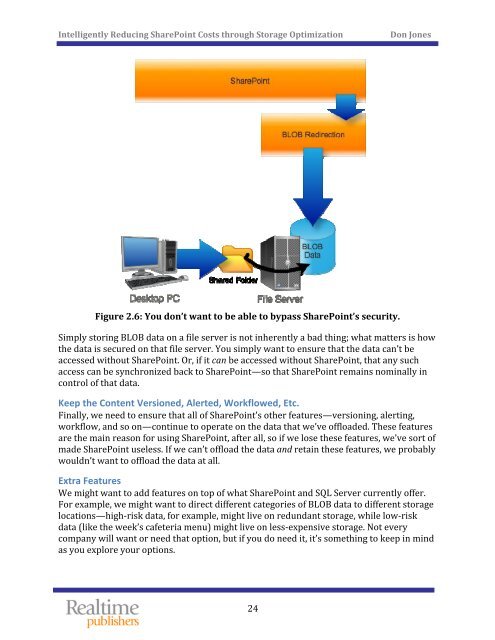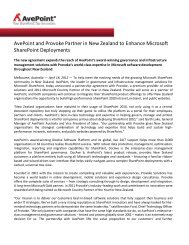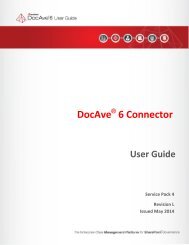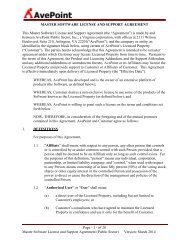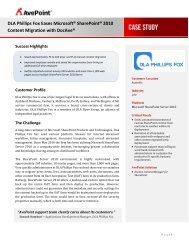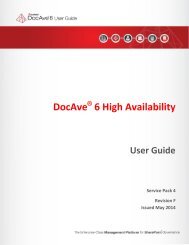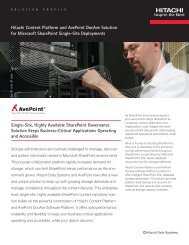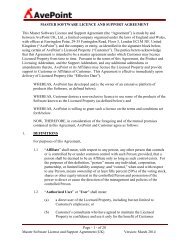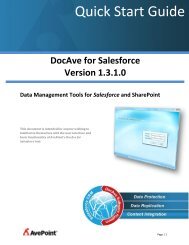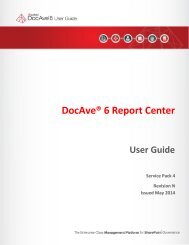The Essential Guide to Optimizing SharePoint Storage - AvePoint
The Essential Guide to Optimizing SharePoint Storage - AvePoint
The Essential Guide to Optimizing SharePoint Storage - AvePoint
Create successful ePaper yourself
Turn your PDF publications into a flip-book with our unique Google optimized e-Paper software.
Intelligently Reducing <strong>SharePoint</strong> Costs through S<strong>to</strong>rage Optimization<br />
Don Jones<br />
Figure 2.6: You don’t want <strong>to</strong> be able <strong>to</strong> bypass <strong>SharePoint</strong>’s security.<br />
Simply s<strong>to</strong>ring BLOB data on a file server is not inherently a bad thing; what matters is how<br />
the data is secured on that file server. You simply want <strong>to</strong> ensure that the data can’t be<br />
accessed without <strong>SharePoint</strong>. Or, if it can be accessed without <strong>SharePoint</strong>, that any such<br />
access can be synchronized back <strong>to</strong> <strong>SharePoint</strong>—so that <strong>SharePoint</strong> remains nominally in<br />
control of that data.<br />
Keep the Content Versioned, Alerted, Workflowed, Etc.<br />
Finally, we need <strong>to</strong> ensure that all of <strong>SharePoint</strong>’s other features—versioning, alerting,<br />
workflow, and so on—continue <strong>to</strong> operate on the data that we’ve offloaded. <strong>The</strong>se features<br />
are the main reason for using <strong>SharePoint</strong>, after all, so if we lose these features, we’ve sort of<br />
made <strong>SharePoint</strong> useless. If we can’t offload the data and retain these features, we probably<br />
wouldn’t want <strong>to</strong> offload the data at all.<br />
Extra Features<br />
We might want <strong>to</strong> add features on <strong>to</strong>p of what <strong>SharePoint</strong> and SQL Server currently offer.<br />
For example, we might want <strong>to</strong> direct different categories of BLOB data <strong>to</strong> different s<strong>to</strong>rage<br />
locations—high‐risk data, for example, might live on redundant s<strong>to</strong>rage, while low‐risk<br />
data (like the week’s cafeteria menu) might live on less‐expensive s<strong>to</strong>rage. Not every<br />
company will want or need that option, but if you do need it, it’s something <strong>to</strong> keep in mind<br />
as you explore your options.<br />
24


